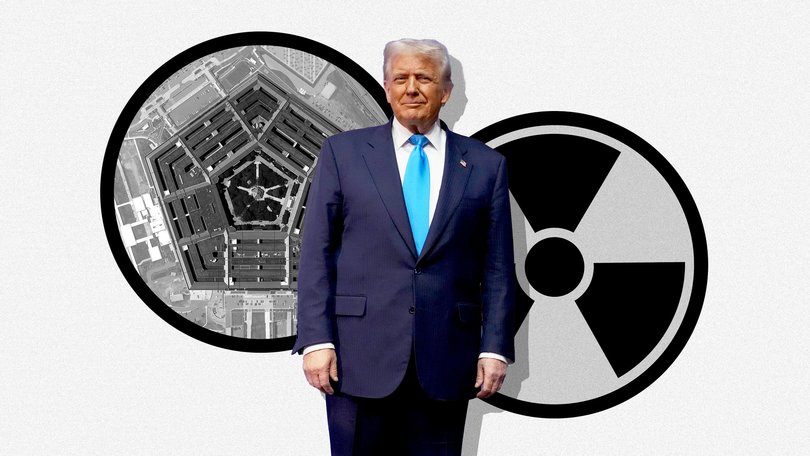Donald Trump’s nuclear test plan won’t include explosions, Energy Secretary confirms

The nuclear testing ordered by President Donald Trump will not involve nuclear explosions, US Energy Secretary Chris Wright said Sunday, clarifying that the testing would involve “the other parts of a nuclear weapon” to ensure they are working properly.
Mr Wright’s comments came four days after Mr Trump made the declaration that he was ordering the US military to resume nuclear testing “on an equal basis” with other countries, raising the spectre of a return to the worst days of the Cold War.
“I think the tests we’re talking about right now are systems tests,” Mr Wright said in an interview on the Fox News show “The Sunday Briefing.”
Sign up to The Nightly's newsletters.
Get the first look at the digital newspaper, curated daily stories and breaking headlines delivered to your inbox.
By continuing you agree to our Terms and Privacy Policy.“These are not nuclear explosions. These are what we call noncritical explosions.”
Mr Wright said Americans in places such as Nevada, where the United States has a nuclear test site bigger than the state of Rhode Island, should not expect to see a mushroom cloud.
On Wednesday — minutes before he met with President Xi Jinping of China in South Korea — Mr Trump said in a social media post that he was ordering the Pentagon to step up testing of nuclear weapons.
“We’ve halted it years — many years — ago,” Mr Trump later told reporters, referring to the last US explosive test of a nuclear weapon in 1992.
“But with others doing testing, I think it is appropriate that we do also.”
But detonation tests are not common anymore: The only nation that has been regularly doing nuclear tests in the past quarter-century is North Korea, and its last explosive test was in September 2017.
China has rapidly expanded its nuclear stockpile and deployed missiles in new silos, but it has not tested a nuclear weapon since 1996.
Russia has not conducted a confirmed test since 1990, although it did recently declare that it had tested two exotic delivery vehicles for nuclear weapons: a nuclear-powered cruise missile and an undersea torpedo, called Poseidon, that could cross the Pacific to the West Coast of the United States. (The United States itself routinely tests unarmed missiles.)
In 1993, the Clinton administration announced plans for a treaty in which nations would forgo nuclear blasts. Although the 1996 test-ban treaty never officially went into force, it created a global norm of not testing the destructive bombs.
Washington is currently undergoing an effort to replace its warheads with updated versions. The overall cost of the sprawling program over three decades is estimated at $1.7 trillion.
Mr Wright on Sunday said that testing was underway on the new nuclear systems.
“And again, these will be non-nuclear explosions,” Mr Wright said. “These are just developing sophisticated systems so that our replacement nuclear weapons are even better than the ones they were before.”
© 2025 The New York Times Company
Originally published on The New York Times
